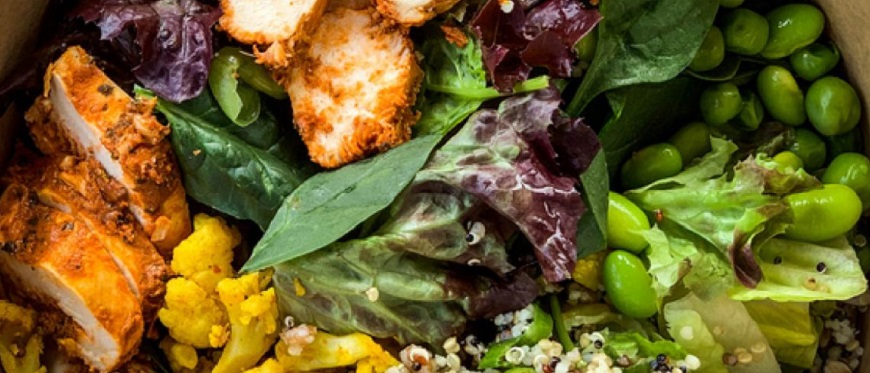Our dietitian answers 10 questions about the commonly recommended diet.
If you’re one of the more than 500 million people worldwide who have been diagnosed with Irritable Bowel Syndrome (IBS), your doctor or nutritionist may have suggested the FODMAP Diet. But recently, the highly restrictive diet has gone more mainstream, and it has been being extolled for its ability to help people both lose weight and gain relief from uncomfortable digestive symptoms.
So, is it effective -- and safe? We turned to David Hernandez, RDN, a dietitian with the University of Vermont Health Network – Central Vermont Medical Center, for answers. Hernandez has more than 35 years’ experience in the field and is also Vermont’s only officially trained FODMAP dietitian.
What in the world is FODMAP?
FODMAP stands for Fermentable Oligosaccharides, Disaccharides, Monosaccharides And Polyols, which are short-chain carbohydrates (or sugars) that the small intestine absorbs poorly. Because of this, these foods can cause intestinal distress. Symptoms may include abdominal discomfort, nausea, bloating, gas, diarrhea or constipation, or a change in bowel habits. When people refer to the FODMAP diet, they really mean a diet low in FODMAP sugars.
Who is this diet for?
The FODMAP Diet, developed by nutritionists at Monash University in Australia, is part of the therapy for people who have been diagnosed with Irritable Bowel Syndrome, or IBS. This is an elimination diet that helps those with IBS figure out what foods are problematic for them.
Who is this diet not for?
Anyone who is underweight or is experiencing disordered eating. The diet is not meant for weight loss, but it eliminates so many commonly eaten foods that people can lose weight on it. That can be dangerous for those already underweight. Strict or restrictive eating patterns are not recommended for those experiencing disordered eating.
How does it work?
Patients start off on eating a low FODMAP diet for two to six weeks. High-FODMAP foods are then re-introduced, one group at a time, every three days.
The re-introduction period can also take anywhere from two to six weeks. After the initial appointment, Hernandez says he usually meets with patients monthly to review food diaries and symptom logs together.
“By the end, you have a personalized diet – a list of foods that you can feel confident agree with you. Patients are also more knowledgeable about what foods trigger symptoms, so they can either avoid those or decide to eat them sparingly. This approach helps maximize nutrient intake and variety in the diet,” Hernandez says.
What are the foods to avoid?
High FODMAP foods that aggravate the gut include:
- Dairy-based milk, yogurt and ice cream
- Wheat-based products such as cereal, bread and crackers
- Beans and lentils
- Some vegetables, such as artichokes, asparagus, onions and garlic
- Some fruits, such as apples, cherries, pears and peaches
- Any foods containing high fructose corn syrup
Garlic and onions, Hernandez says, are by far the most common culprits, and apples are a close third.
How effective is it?
The FODMAP Diet is highly effective for patients with IBS. According to Hernandez, global data show that it has reduced IBS symptoms for 50% of participants.
After using the FODMAP Diet to identify problem foods, some people can reduce or even discontinue their medications, according to Hernandez. He notes that the overall treatment strategy for IBS has shifted in recent years from a focus on medicating symptoms to avoiding the foods that tend to cause flare-ups.
If I fail a food during the elimination period, does that mean I can never eat it again?
Not necessarily, says Hernandez. When a patient reacts to a certain food, he advises them to try it again in six months, if it’s something they really enjoy. “IBS symptoms often wax and wane,” he explains. “Over time, people can start to tolerate more, once we eliminate some of the big offenders.” Further, Hernandez says, a food that causes problems one week won’t necessarily be a problem in the next – and vice-versa – because symptoms are a result of cumulative FODMAP exposure.
What are the causes of IBS?
According to Hernandez, there is no definitive cause of IBS. Some potential causes include a change in the digestive tract, low-grade inflammation, and alterations in the gut microbiome.
“We know that the gut has its own nervous system, called the enteric nervous system. When that system becomes hyper-sensitive, our nerves are triggered. Some people are just a little more sensitive. And sometimes, if the immune system has become activated, that can also cause irritation.”
Can I try the FODMAP Diet on my own?
While Hernandez recommends that IBS patients educate themselves about the diet, he doesn’t recommend that people try it on their own.
“First of all, people who are having digestive symptoms, if they haven’t yet received a diagnosis, they shouldn’t just assume it’s IBS and start modifying their diet,” he advises. They could end up covering up a bigger problem that hasn’t been diagnosed yet,” such as colorectal cancer. “So first, I recommend that people have a good medical evaluation to eliminate the possibility of a more serious condition.”
Even for those with a known IBS diagnosis, it’s helpful to have some guidance with the FODMAP Diet.
“It can be an intensive process, although simplified eliminations can be done, depending on a person’s situation and food history,” says Hernandez. “High-FODMAP carbs are in almost everything, from most processed foods, to even many foods that are actually good for you.” It’s important to work with a doctor or dietitian who can make sure you’re following the diet correctly, which is critical to success, while also maintaining proper nutrition.
Can I stay on the FODMAP diet long-term?
Hernandez doesn’t recommend it. He says there can be negative consequences if you stay on it for too long. You’re avoiding some good fibers, and you’re potentially eliminating lots of good nutrients. That can have an impact on blood sugar and cholesterol.
“The goal is to eliminate foods that are irritating, in order to maximize your tolerance for foods that are helpful,” he says. For those with IBS, a combination of dietary changes, medications and stress management are often the best approach.
Food Group | High FODMAP Food | Low FODMAP Alternative |
| Meat, poultry, seafood, eggs | Marinated meats, processed meats (sausage, salami), meats served with sauces | Plain cooked meats, poultry, seafood, eggs |
| Fruit | Apple, pear, mango, dried fruit, stone fruit (peach, nectarine, plum), watermelon | Orange, banana, grapes, kiwi, strawberries, cantaloupe, rhubarb, raspberries, pineapple |
| Vegetables | Garlic, onion, leek, artichoke, asparagus, snow peas, mushrooms, cauliflower | Capsicum (green), zucchini, potato, beans (green), eggplant, carrot |
| Bread and cereals | Wheat/rye/barley-based breakfast cereal, bread, biscuits and snack products | Spelt sourdough bread, gluten free bread, oat sourdough bread, oats, quinoa flakes, corn flakes, gluten free pasta, quinoa pasta, rice cakes (plain) |
| Pulses | Red kidney beans, split peas, falafels, baked beans | Chickpeas (canned), lentils (canned), lima beans (boiled) |
| Nuts and seeds | Cashews, pistachios | Macadamias, peanuts, pine nuts |
| Dairy | Cows’ milk, custard, sweetened condensed milk, evaporated milk, ice cream | Lactose-free milk, yogurt (small amounts), soy milk, whipped cream |
| Sugars and sweeteners | Honey, high fructose corn syrup, sugar-free confectionary | Dark chocolate, table sugar, maple syrup, rice malt syrup |
| Other | Garlic/onion-based marinades and sauces, vegetarian mince | Barbeque sauce, mayonnaise, soy sauce, chutney, cranberry juice |





